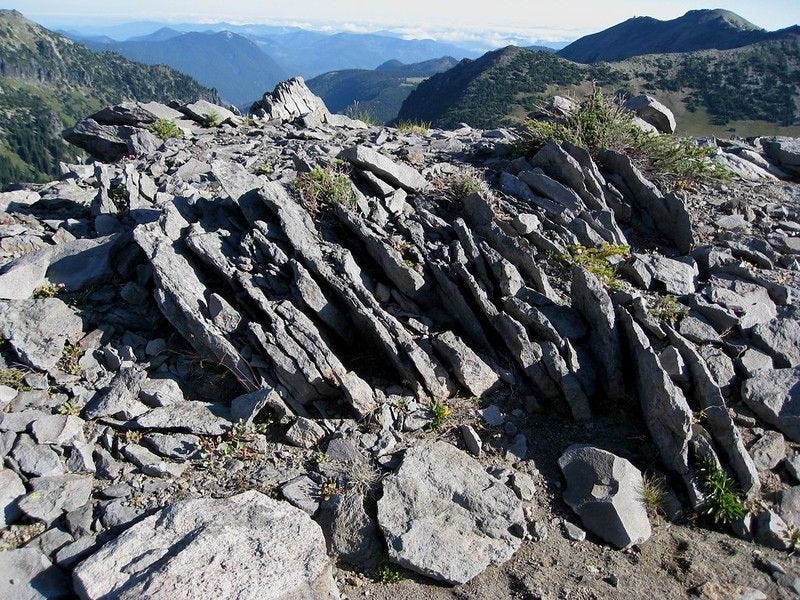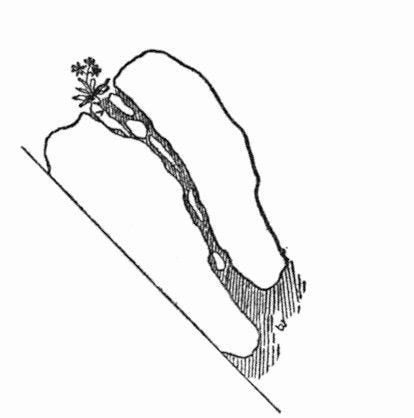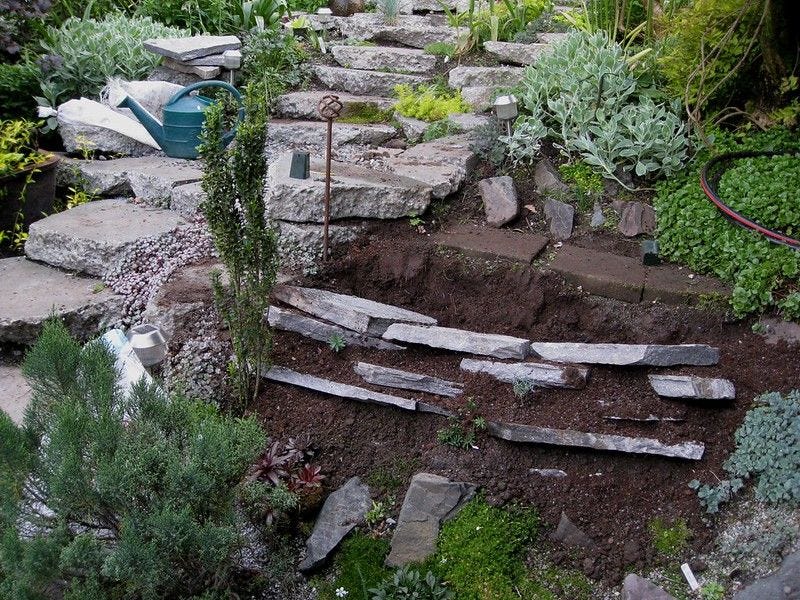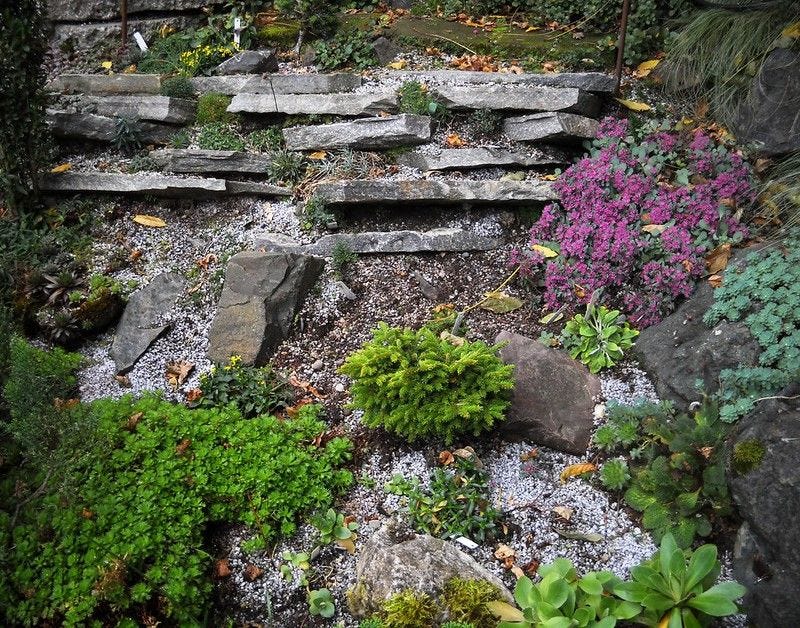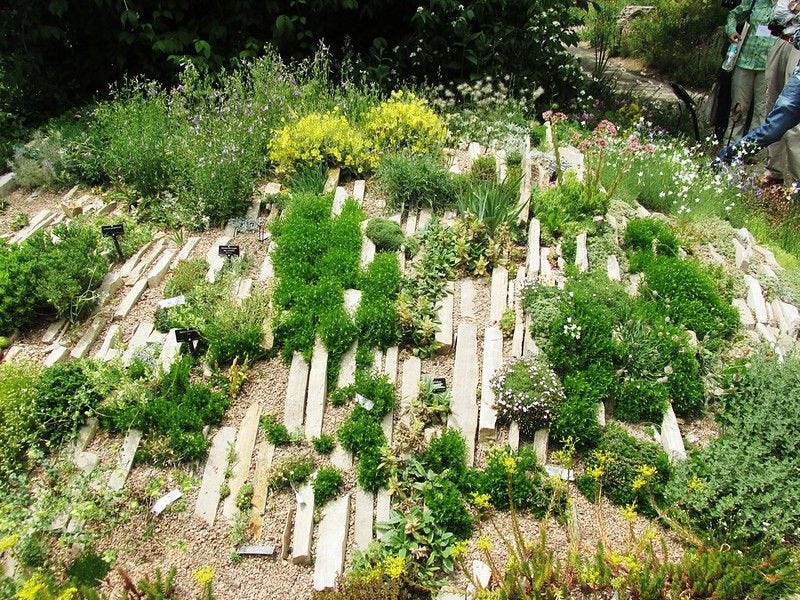Crevice Gardening
A crevice garden is a useful method for creating a drought tolerant landscape with an alpine twist.

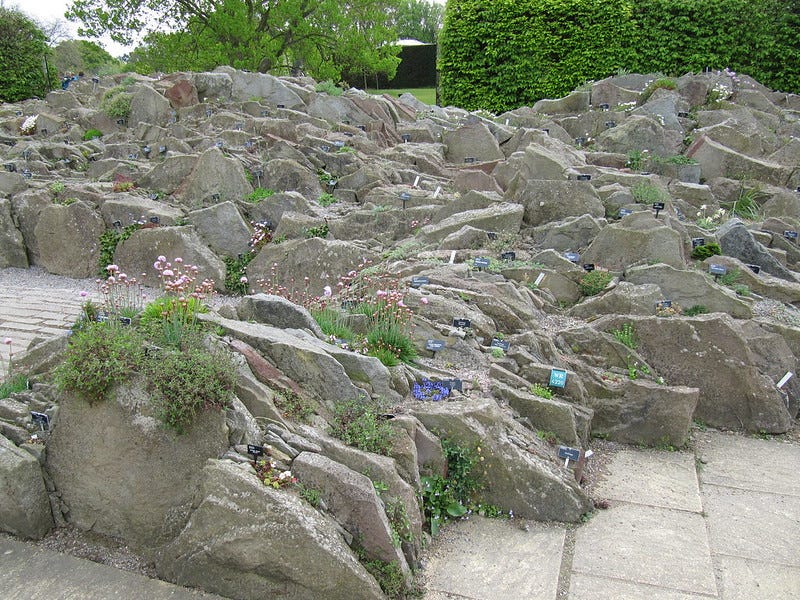
Crevice Gardens are a type of Rock Garden that has been recently gaining in popularity. A Rock Garden is a general term for a garden design that uses rocks and stones as major feature of the landscape.
A crevice garden is a specific type of rock garden where the rocks are the defining feature of the landscape, with plants planted in the crevices between the rocks. This type of rock garden more closely resembles a true natural rocky environment, as oppose to a traditional rock garden that uses rocks more as an aesthetic.
Inspired by rocky outcroppings found in Alpine regions, a crevice garden is designed to mimic the scene of plants growing in the gaps of exposed bedrock on a slope.
Rock Gardens have been around for hundreds of years, but crevice gardens are a much more recent concept. Crevice gardening was developed in the Czech Republic during the 1980s by gardeners seeking to create miniature mountain or alpine scenes in a home garden.
Rocky outcrops are commonly found in desert locations too, which makes this method of gardening very suitable to xeriscape gardens. Even in alpine settings, the plants need to grow long tap roots in the crevices to reach down below the Rocks into the lower soil, which is a typical characteristic of a drought tolerant plant.
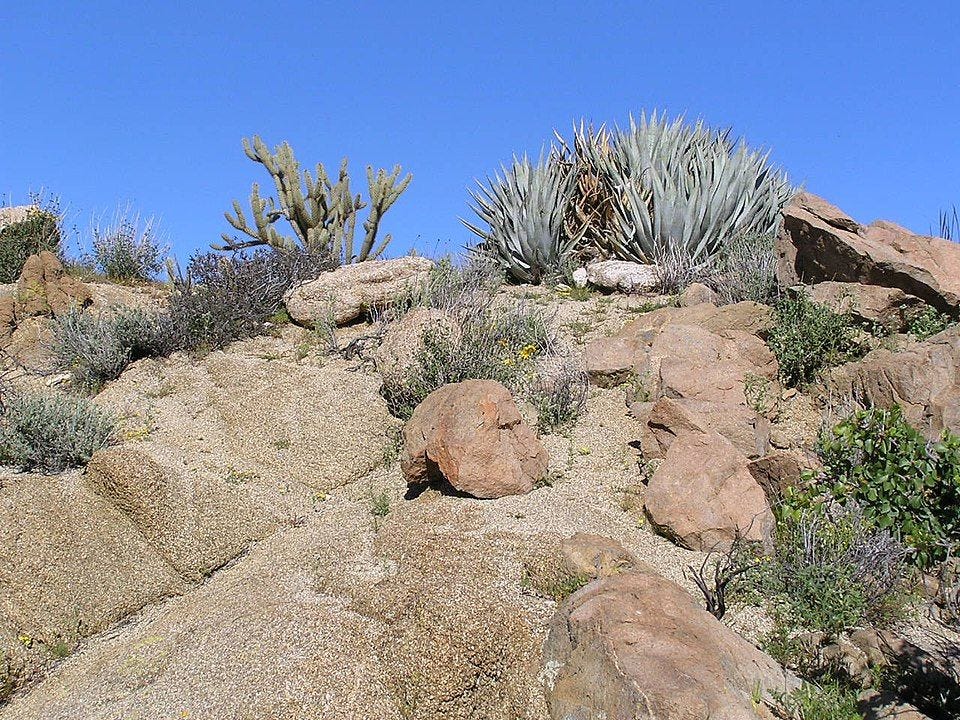
Designing a Crevice Garden
Crevice gardens are a form of hillside gardening, and the best siting is on a slope. Mounding soil into berms can also be done when the existing ground surface is flat. In a crevice garden the soil should be well-draining. When creating berms for the crevice garden, well-draining soil can be used by placing it over the existing soil, rather than amending the soil. If the existing soil is dense clay, you should amend with perlite or lava rock to improve drainage. If you are not sure what type of soil you have, you can test it by hand using this method detailed in an earlier post. Crevice gardens are best in a full sun location and away from trees whose roots can disrupt the garden.
Once the subsurface is ready, rocks need to placed in the ground. Unlike a typical rock garden, the rocks are usually placed vertically into the soil. Large flagstone type rocks are best suited for this, or you can also use broken up pieces of concrete (urbanite). The gaps between the rocks can be as wide as you like but are typically as narrow as an inch wide. After planting, any remaining gaps or bare soil should be covered up by gravel or similar loose material such as decomposed granite.
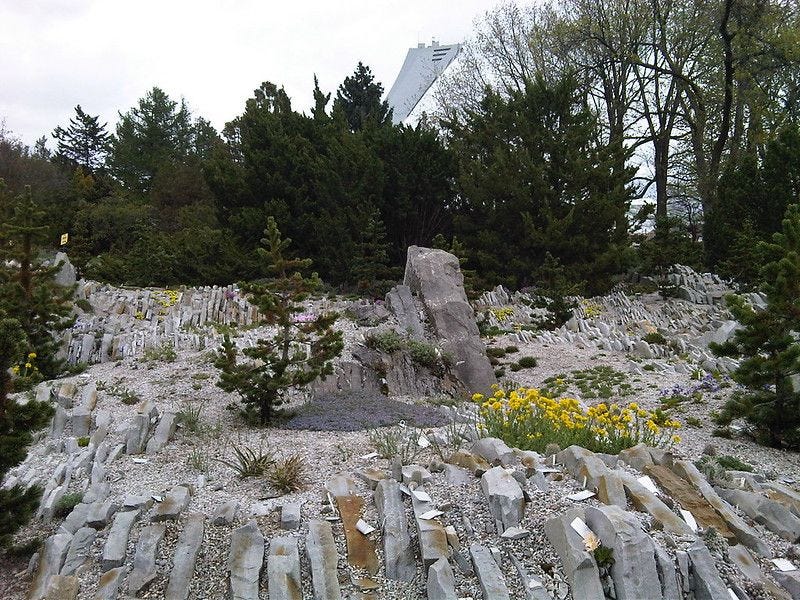
If the rocks lean to one side, this is called a diagonal crevice garden and has some additional challenges in construction. Soil can be crushed by the leaning rocks which can seriously inhibit good drainage of the soil. The remedy for this is to place smaller rocks between the larger slabs as shims to prevent movement.
Plant Selection
The plants used in a crevice garden need to be small to start and able to be planted bare-root (the crevices will be too small to fit a rootball with soil). Succulents and perennials are a good choice for quickly filling out a crevice garden. The growing medium in a crevice garden will typically have nutrient poor soil. Plants that are adapted to poor soils and are drought tolerant tend to do very well as they will generally have a tap root that will reach far below the rocks. Good choices for beginners are ice plants (Delosperma), Hens and Chicks (Sempervivium), Dianthus and Lewisia. Dwarf conifers such as Spruce and Pine do well in crevice gardens too. Most alpine plants will grow well in a crevice garden, with some hardy enough to cope with searing summer heat.
After planting, nurse rocks should be used to protect the vulnerable young plants from the sun.
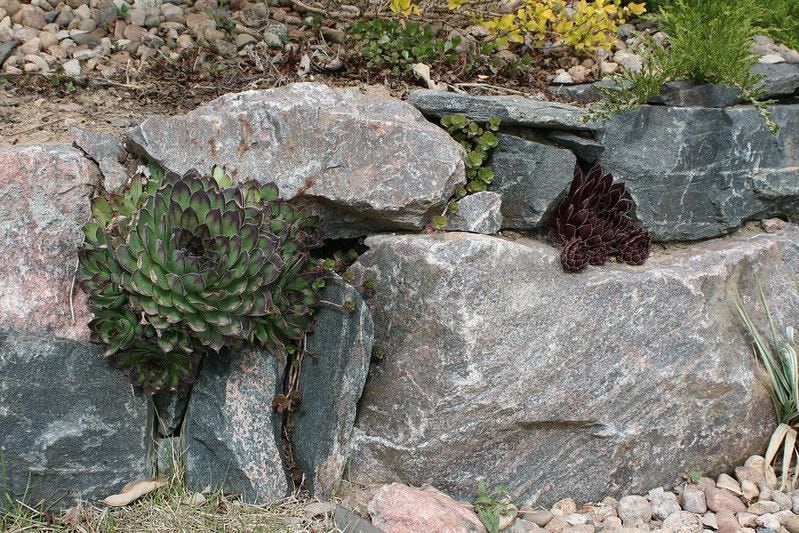
Vertical, Horizontal or Diagonal Placement
A classic crevice garden will feature vertically placed rocks, however diagonal and horizontal layouts are becoming more common. A horizontal placement lends itself well to a more vertical wall garden, but this method can be hard to distinguish from a traditional rock garden that uses rocks for aesthetic rather than recreating the crevice environment found naturally in rocky outcrops. The use of smaller rock shims is very important here as the horizontal slabs can completely flatten and compress the soil between them. Vertical placement is the easiest and allows for easier "course-correction" and this is the method best used by beginners.
Crevice Garden Examples
The best way to learn about crevice gardens is to see some for yourself. Here are some interesting public examples:
The Rock Alpine Garden at the Denver Botanic Gardens features a number of classic crevice garden plantings.
The Natural History Museum in Los Angeles features a living wall in its nature gardens. The living wall is made up of vertically stacked sandstone slabs with plants growing between the rocks.
The Alpine Garden in the Montreal Botanic Garden uses a crevice garden design.
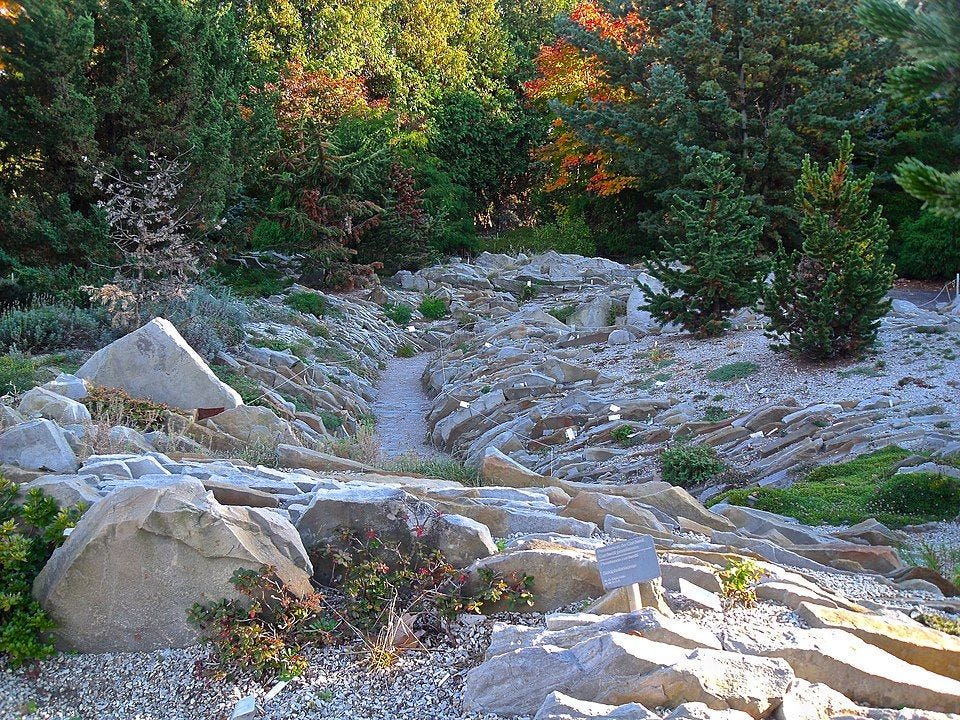
In the UK, Wisley botanic garden features the centenary crevice garden. To commemorate the 100th year of the original rock garden in Wisley, the crevice garden was installed as a showcase of modern rock garden style.
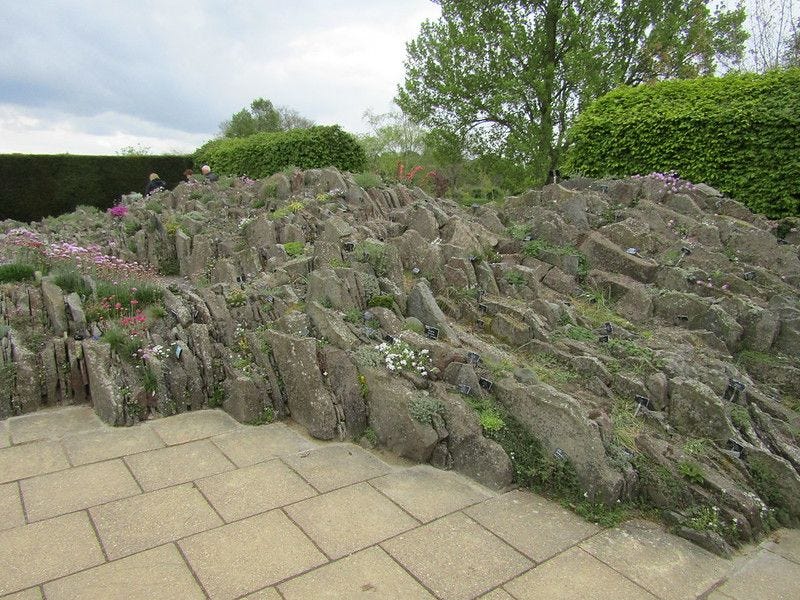
In addition to these examples, many botanic gardens have created crevice gardens in recent years either as new features or revamps of an existing "alpine rock garden".




